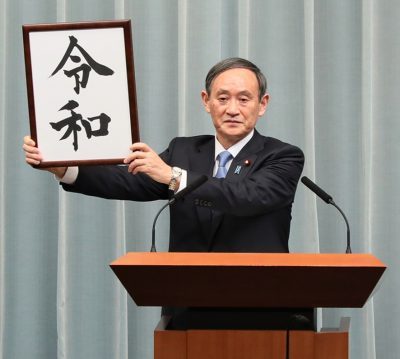Why the US Will Miss Out on a Southeast Asia Suga-high
Tokyo leading Southeast Asia on a steady course when it comes to China

Some years ago, I was part of a delegation of scholars sent to Japan to learn about Tokyo’s diplomatic approach to Southeast Asia.
What intrigued me was the sheer industry of our Ministry of Foreign Affairs minders. One of them, a junior diplomat, worked 18-hour days during our trip to help seeing us through our hectic daily schedules, only to then “retire” back to her Gaimusho office to complete work left undone. With the recent departure of Shinzo Abe from the scene, his successor Yoshihide Suga must be working these diplomats even harder than before.
Abe, for all his foreign policy accomplishments, has left Suga with much-unfinished business — mounting tensions over the Japanese-administered Senkaku Islands which China claims as the Diaoyu, the Northern Territories problem with Russia, and the threat of a nuclear-armed North Korea.
The saving grace for Suga is that Japan under Abe had already arrived at an answer to one of the region’s most existential questions: how to manage the challenge of China. On this, Japan and Southeast Asia see more eye-to-eye than the U.S.
The crux of the issue is this: the U.S. has a Manichaean view of China, and wants to rally an anti-China coalition of the willing. But Japan and its Southeast Asian neighbors have a fuzzier take — that cooperation and confrontation can be employed simultaneously.
In his recent trip to Japan, U.S. Secretary of State Mike Pompeo pushed the “free and open Indo-Pacific” concept, and rallied the other members of the so-called Quad, — the Quadrilateral Security Dialogue comprising Australia, Japan and India — against China.
The U.S. will not gain much traction here. Yes, India is keener to challenge China because of the festering border dispute between the two Asian giants. But remember that it was only two years ago when Indian premier Narendra Modi stopped short of criticizing China and highlighted the affinity between India and Southeast Asia.
The same applies to Australia, which has seen its bilateral relationship with Beijing tank recently. In July, Foreign Minister Marise Payne rejected Pompeo’s anti-China call, saying Canberra had no plan to “injure” its ties with China.
This is where Japan holds the key. Those with good memories will remember that it was only in 2014 that Abe was seen as the devil incarnate by many Chinese. When Abe delivered the keynote address at the 2014 Shangri-La Dialogue, there was talk that the Chinese delegation would walkout during his speech. And who can forget the frostiest of handshakes between Abe and Xi Jinping at APEC that year?
That said, it has been all change in the Sino-Japanese relationship. For years, Tokyo had dissed China’s Belt and Road Initiative. Since 2017, however, Tokyo has generally warmed to the idea. When Chinese ships intruded into Japanese waters earlier this year, Japan offered a firm yet calm response. Nor did Tokyo join other Western countries in criticizing China’s national security law for Hong Kong in July. Japan has refused to call off Xi’s planned visit to Japan this year.
Japan’s dual approach toward China — leveraging China’s economic weight, yet seeking to manage its assertiveness — is something that the 10-member Association of Southeast Asian Nations has been doing for a while. ASEAN supports the principles of a free and open Indo-Pacific, but has refused to be drawn into any arrangement that directly targets China.
The reason is straightforward: China, as ASEAN’s largest trading partner and third-largest foreign direct investor, is too important a market to miss.
This does not mean that ASEAN and Japan have been silent in the face of Chinese assertiveness, particularly in the South China Sea. Japan has been a steady partner to countries such as Malaysia, the Philippines and Vietnam, helping to increase their maritime domain awareness. Likewise, the same three countries have publicly opposed China’s claims in the disputed maritime area with a slew of representations at the United Nations.
Therein lies the difference between the Japan-Southeast Asian approach to China compared to Washington. While the latter ups the rhetoric by stressing the need to oppose the Chinese Communist Party, Japan and Southeast Asian countries plod along quietly, cooperating with China where they can, confronting where they must.
This is the beauty of the free and open Indo-Pacific concept: the principles of freedom of navigation, the rule of law, and no recourse to the use of force are normative, not kinetic. The concept seeks to dissuade China from actions that undermine the regional order mapped out by a free and open Indo-Pacific concept strategy.
The American call for the expansion of the Quad will only raise the hackles of China and scare away any countries that actually subscribe to free and open Indo-Pacific concept principles.
In the 1980s, Japan was seen to be leading Asia’s economic development, paving the way for other countries in Southeast Asia. The same could be said today. Japan is seeking to lead its Southeast Asian counterparts on a steady course in their approach to China. This is precisely why the U.S. will not get a Suga-high in Southeast Asia.
*
Note to readers: please click the share buttons above or below. Forward this article to your email lists. Crosspost on your blog site, internet forums. etc.
William Choong is a senior fellow at the ISEAS-Yusof Ishak Institute in Singapore.

